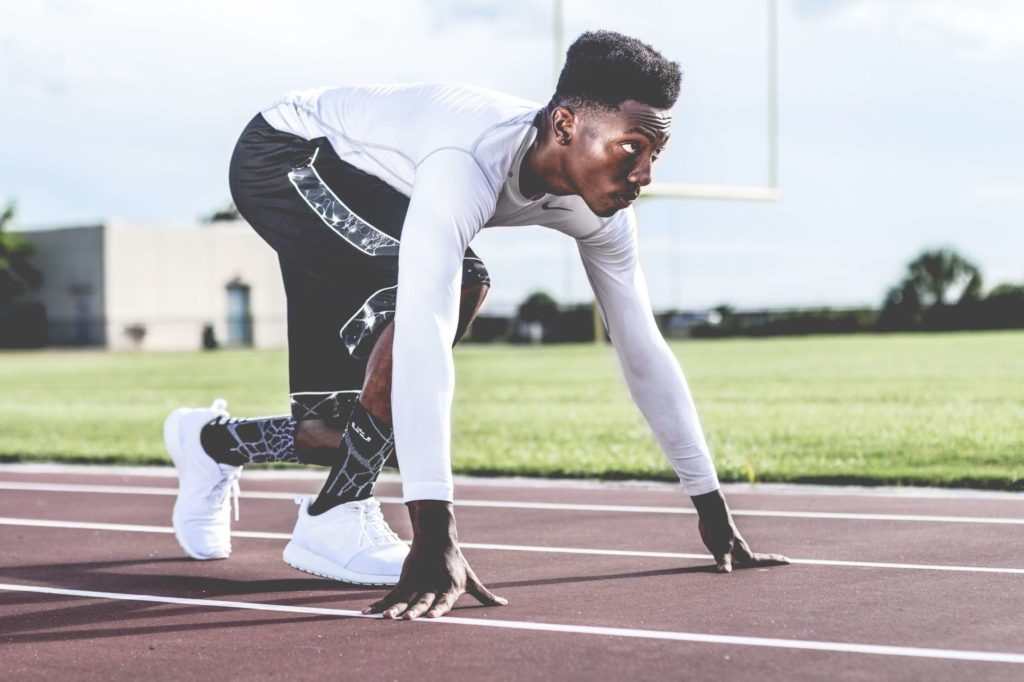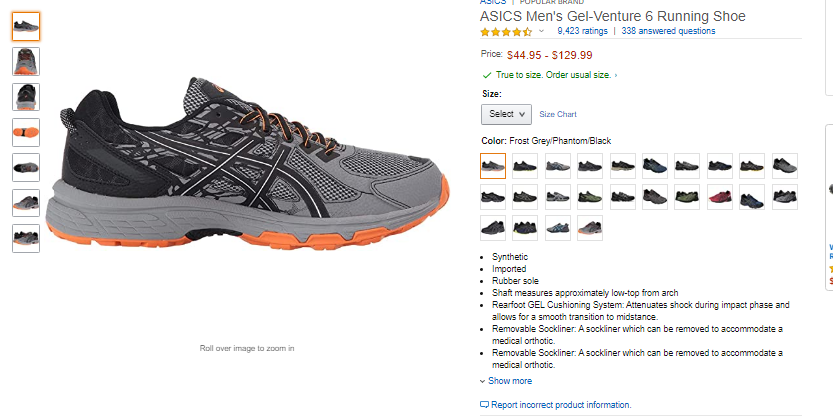
Table of Contents
Introduction
So, you want to know how to run a mile faster, eh? Well, it’s definitely a worthy goal, but it’s going to require both thought and work.
If you want to improve your speed, you will have to track your progress. It’ll be vital to put together a plan of action and make sure that you’re doing all that’s required to gain a step further with every passing day.
See if you can find a standard 400-meter track in your local community. Four laps around a 400-meter track is equal to a mile. Some tracks might be shorter. If the track is shorter, you might need more laps to complete an entire mile.
Below are 10 steps that’ll help you on your quest to shred time off your mile.
1.Start Intelligently
Nothing can be achieved in a day or two. If you’re a beginner, you should never try to achieve an unrealistsic goal within an unrealistic timeframe.
Although it may be a slight blow to your ego, you will have to understand your body’s limitations, and prepare mentally. Even if you do not notice any visible improvements in the first couple of days, you should not lose hope.
Make sure that you are making progress every day in the form of action. For this, you will have to change your routine. You will have to make variations in the type of runs, pace, and even types of training to maximize any benefits you gain.
You should always work on your speed. Follow expert advice and reliable sources of fitness to become familiar with techniques, different training methods, and to continuously learn.
2.Choose the Right Food
Running can be helpful when it comes to eliminating extra weight that can slow you down. However, you may also have to make some smart choices while deciding on your diet.
You need to fuel your body properly to maximize the benefits of training. Your focus should not always be about cutting calories. Instead, focus more on avoiding the wrong kind of calories.
To start with, try eliminating or, at the very least, minimizing junk foods that include starchy fried snacks, sweetened sodas, candy, and sugary foods. These foods do not have much in the way of nutritional value.
Instead, try incorporating foods like sweet berries, crunchy vegetables, and fresh fruits into your routine. Make sure that your meals have an adequate amount of leafy greens, whole grains, and lean protein.
It’s also a good idea to avoid overeating. Though it’s natural to eat more when you’re extremely active, you will still have to limit your calorie consumption, to a certain extent, to avoid weight gain. If needed, feel free to take the help of a registered dietitian to customize a plan that’s specific to your needs.
3.Build Muscular Strength
Your muscular strength will be a big determingin factor in deciding your speed.
For muscular strength, you don’t necessarily need to practice crazy, rigorous workouts at the gym. You just need to practice some bodyweight exercises that can help build your muscular strength.
You can start with whole-body movement exercises after your run. Make it a habit to practice every other day. Keep it simple, yet effecitve. For example, you can practice ten to fifteen push-ups, ten single-leg squats, ten side and front lunges, and one minute plank after your three-to-four-mile run.
These basic exercises will help to build muscle strength. In addition to improved muscle strength, you can expect a balanced and stable body to support your training sessions.
4.Get the Right Gear

In addition to enhanced muscular strength, you will need the right gear to support your running. When it comes to gear, you will have to invest in proper shoes.
Get a shoes that are designed to give you the proper comfort and support you need for long-distance running. To run on a mile faster, you will have to run like a wildchild! That means you will need a shoe that can get off the heels and onto the toes in an efficient manner.
For running, it is suggested to go with a lightweight shoe. It will eventually help to improve your speed. As the options will be many, it’s important to conduct proper research to find the a pair that suits you best.
Without comfort and required support, you will not be able optimize your speed, and train comfortably. Footwear becomes even more vital as you age and as your body becomes more susceptible to backpain, joint pain, and other potential pangs or injuries.
5.Interval Training
Interval training can be the best way to boost your confidence as well as speed. You will have to add some speed interval repeats in your running to improve your pace.
You can practice speed repeats once every week. For instance, you might consider running multiple 200 or 400-meter sprints on a track with minimal recovery after each sprint. Make it straightforward, simple, but consistent.
Spend five or ten minutes warming up and then try to alternate between 200 or 400 meter runs. After each sprint, consider walking or jogging for that same distance, and then do another sprint.
You can practice interval training on a track, treadmill, or even on the road. While running on the road, you can use telephone poles and lamp posts as the interval marks.
6.Boost Stride Turnover
You can improve your stride turnover to run a mile faster. If you improve your stride turnover, you can take shorter and quicker steps that will help to improve the pace.
Stride turnover is the rate that your feet hit the road or pavement. The stride turnover for beginners is typically quite low. The stride turnover rate for elite distance runners is about 180 strides per minute.
You can, however, practice some simple exercises to improve your rate.
Know your current stride turnover rate. Run one minute with your current stride rate and then try to increase the rate for the next minute. Repeat it many times in a day and try to improve the stride turnover each time. You can also use the heart rate monitor to identify the stride rate.
7.Improve Running Form
In order to run a mile faster and without injury, one should strive to focus and improve upon their running form.
Consider simple warm-up drills to improve your running form. For example, you can practice a fast feet drill to train your feet for quick movements. You can run as fast as possible for a couple of minutes to practice this drill.
You can try butt kicks drills to boost hamstring engagement. Similarly, carioca drills can help to improve stability.
In addition to drills, you will have to pay attention to the arm motion, posture, and foot strike position to make a difference in the speed.
8.Build A Stable Core
It is important to build a stable core that will ultimately contribute to the speed.
Runners will need a foundation from the ankle to the head. If your core is weak, it’s possible to tire out prematurely and not perform your best in the second half.
Build a strong core to push against the ground, utilize your legs, and prevent the body from twisting. A stable core will help the body move forward, prevent unnecesarry back pain, and boost your speed in the end.
9.Run Hills & Climb Stairs
Hill repeats can be effective to build strength and endurance. It will also improve your running efficiency and speed.
You can do hill repeats on your treadmill as well; however, you will have to be slightly more cautious when it comes to safety. If a treadmill or hill is not an option, you can consider climbing stairs. Use a staircase with several flights.
Run uphill (or upstairs) for one to two minutes, or whatever duration of time you feel comfortable with. Rest briefly, and then repeat the exercise.
10.Rest
Many believe that they need to work hard every day to run on a mile faster. There is no doubt that training plays an important role in shedding seconds or even minutes off your mile time.
However, rest is also required for recovery. Your muscles need a break for recovery and repair, so that they’re in prime shape for your next big run.
You do not need to take a complete rest for the entire day. You can stiIl engage in some easy and fun physical activities. You can swim, practice some yoga, or enjoy a bike ride.
Wrapping Up
You will need consistent effort to run a mile faster. Try every single day and combine a lot of different methods, instead of focusing on the same humdrum routine to achieve your desired benefits.
You need to inspire your body and mind for the challenges ahead. Also, don’t forget to focus on muscle recovery! This is as important as your daily training. Lastly, don’t forget to simply have fun!
Resources
https://www.verywellfit.com/how-to-run-a-faster-mile-2911897
https://nymag.com/speed/2016/12/olympic-medalist-nick-willis-on-how-to-run-a-faster-mile.html
